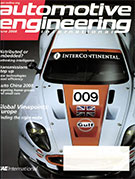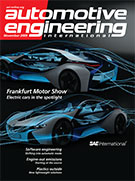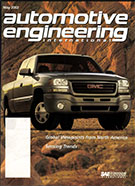Magazine

Aerospace & Defense Technology: August 2023
2023-08-03
Electrifying Aviation: The Path to Decarbonizing the Skies /Electric aviation mirrors the early stages of the electric vehicle revolution Advances in Military Avionics Technologies Create New Challenges for RF Test and Measurement Plasma Electrolytic Oxidation: The Future of Lightweight Designs in Aerospace and Defense Advanced RF Simulation Reduces Cost and Schedule Risk Assure 5G NTN Performance Before Launch In the complex and quickly evolving 5G NTN landscape, simulating, emulating, and evaluating RF systems boosts mission success. Qualification of Multi-Channel Direction Finding Radar Receivers in The Lab Bullet Impact Testing of Ammunition and Explosives at Picatinny Arsenal A bullet impact (BI) test for evaluating the response of energetically loaded items has been established at the U.S. Army Combat Capabilities Command (DEVCOM) Armaments Center (AC) Explosive Development Facility.















